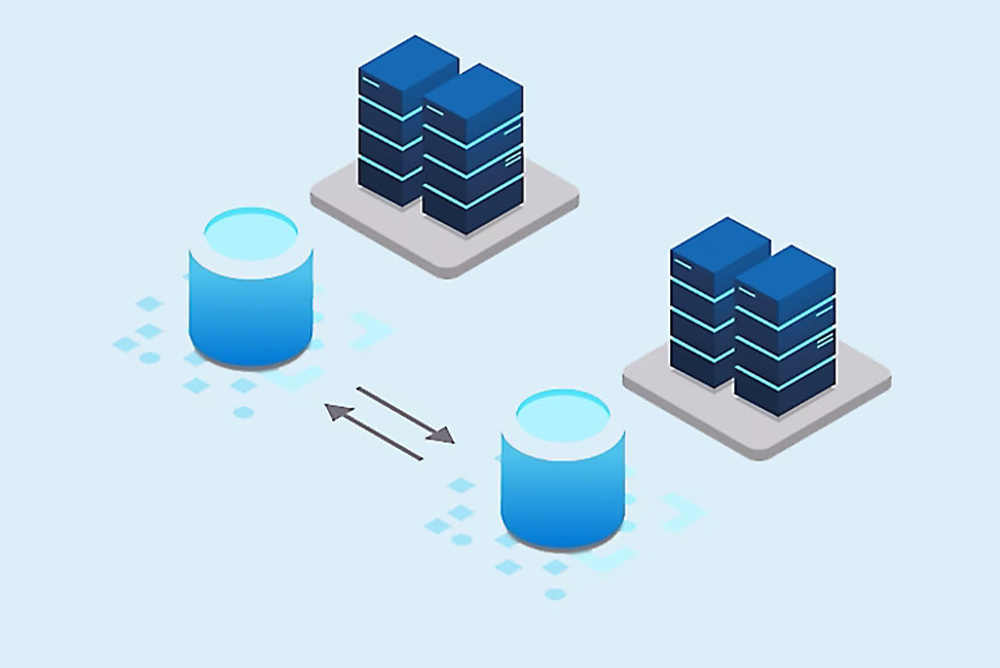

The SAP OS/DB Migration Service in Muscat is tailored to assist your clients in transitioning their SAP installation to a new technical platform, whether it involves changes in operating systems, databases, hardware, or data centers.

Leverage our expertise in OS/DB migration in Muscat to expand your SAP business. Our customized solutions and proven methodologies minimize disruptions and maximize efficiency during transitions to new operating systems or databases.
At Nordia, we enhance the scalability, reliability, and performance of your SAP technology through innovation and agility in Muscat. Let us handle your migration with precision and care, enabling you to focus on business success. We offer expert guidance, seamless execution, and unmatched support for migration in Muscat. We work precisely to deliver the migration within the shortest possible downtime.
Harness Nordia's expertise in SAP OS/DB migration services in Muscat, including HANA Upgrade, Sybase Upgrade, and SAP Database Upgrade, to elevate your digital business solutions. Our specialized services optimize performance and efficiency during transitions to upgraded operating systems and databases. Through innovation and reliability, Nordia streamlines migrations to minimize disruptions and maximize productivity in Muscat.
Trust our experts to deliver customized solutions for your SAP database upgrades, enhancing your business's scalability and performance. Our OS/DB migration services in Muscat open doors, streamline operations, and drive your business forward.

Our expertise in migrations ensures precision, security, and minimal downtime with tailored solutions for seamless transitions. Nordia excels in data extraction, transfer, and efficient database import, prioritizing your satisfaction and success throughout the upgrade process in Muscat.
Rely on our expertise for migrations in Muscat, where precision, security, and efficiency are our top priorities. Our experienced technical team ensures seamless migrations with minimal business disruptions. Committed to delivering quality, we offer tailored solutions for smooth transition and uninterrupted business operations.
Nordia specializes in customer-centric Migration services in Muscat, ensuring a seamless transition for your business. Understanding your unique requirements, we customize migration solutions to align with your objectives. Our team excels in data extraction and transfer from the source system.
Our dedicated team resolves migration challenges with outstanding customer support and efficient database import to the target system in Muscat. Count on our expertise, reliability, and unwavering commitment to delivering top-notch service. Your satisfaction and success are our primary focus throughout the upgrade process.
If your customer needs to transition their operating system and/or database at any point during the SAP software lifecycle, they will require a migration of their SAP system. The SAP OS/DB Migration Service provided by Nordia in Muscat is optimally designed to facilitate this migration, ensuring smooth continued operations on the new platform.
Moreover, as a responsible SAP Partner in Muscat, you aim to minimize technical risks associated with your customer's operating system and/or database migration. By leveraging Nordia's expert knowledge, you can also mitigate unforeseen costs that may arise during the migration process.


The SAP OS/DB Migration Service in Muscat encompasses a range of Installation and System Copy tasks executed within a suitable test schedule to guarantee optimal performance, availability, and maintainability of your customer's SAP solution on the new OS/DB platform. This service includes:
Preparation of the Primary Application Server (PAS) and Database host systems for the installation of corresponding instances of the target system.
Installation of Additional Application Server (AAS) instances on application host systems in Muscat. .
Definition of a test plan to validate the migration process.
Execution of migration process test runs, comprising:
 Source system copy export.
Source system copy export. Target system copy import.
Target system copy import.
 Target system level check and cleanup.
Target system level check and cleanup.
 System tuning and update migration log files.
System tuning and update migration log files.
 Efficient and technically robust operation of your customer's upgraded HANA or Sybase system, achieved with minimized costs.
Efficient and technically robust operation of your customer's upgraded HANA or Sybase system, achieved with minimized costs.
 Acceleration of your customer's migration projects in Muscat, leading to a quicker return on investment.
Acceleration of your customer's migration projects in Muscat, leading to a quicker return on investment.
 Convenient outsourcing of infrequently required migration expertise.
Convenient outsourcing of infrequently required migration expertise.
 Guidance provided to your customer throughout the migration project in Muscat, supported by a carefully designed, easy-to-follow plan derived from extensive experience with numerous OS/DB, hardware, and database migrations.
Guidance provided to your customer throughout the migration project in Muscat, supported by a carefully designed, easy-to-follow plan derived from extensive experience with numerous OS/DB, hardware, and database migrations.
 Delivery of your customer's SAP solution to ensure optimal performance, availability, and maintainability post-upgrade.
Delivery of your customer's SAP solution to ensure optimal performance, availability, and maintainability post-upgrade.
The migration services in Muscat are available as private-label offerings for SAP Partners. These services are provided directly to end customers by Nordia on behalf of the service organization.
Standard Solutions by Nordia in the Muscat: Additional services beyond the stated scope may be provided as standard services when available or on a time and materials basis.
Based on our extensive experience, the duration of the HANA Upgrade, Sybase Upgrade, and SAP Database Upgrade services in Muscat typically ranges from six to eight weeks, depending on factors such as the size of the database and the number of application server instances in the customer's system.
Unlock SAP’s Potential with Our HANA, Sybase, and Database Upgrade Services in Muscat. Our expert consultants ensure seamless, on-time migrations, maximizing ROI and minimizing disruptions in Muscat.

An SAP Migration OS/DB Service helps you move your SAP system's operating system (OS) and database (DB) to a new environment. This could involve upgrading to a newer version of the same database (e.g., Sybase Upgrade) or migrating to a completely new platform like SAP HANA.
Reasons for migration include:
End-of-support: Upgrading may be necessary if your current OS or database reaches end-of-support status.
Performance improvements: Newer versions of databases like HANA can offer significant performance gains.
Security enhancements: Upgrading can address security vulnerabilities in older systems.
Consolidation: You might want to consolidate multiple databases onto a single platform like HANA.
Common migration types include:
SAP HANA Upgrade: Moving your existing SAP database to the high-performance SAP HANA platform.
Sybase Upgrade: Upgrading your Sybase database to a newer version for improved functionality and security.
SAP Database Upgrade: Upgrading your current SAP database (e.g., Oracle, DB2) to a newer version.
Planning involves assessing your current environment, defining migration goals, choosing a target platform (HANA, newer Sybase, etc.), and developing a detailed migration plan.
The specific steps will vary depending on your migration type, but common stages include:
Preparation: System assessment, downtime planning, and resource allocation.
Migration: Data and system migration to the target environment.
Testing and Validation: Through testing to ensure functionality and performance.
Go-Live and Cutover: Final transition to the new environment.
Post-Migration Support:
Monitoring and addressing any post-migration issues.These services offer expertise, tools, and methodologies to streamline the migration process, minimize downtime, and ensure successful completion.
Costs depend on the complexity of your migration, chosen service provider, and target platform. Consider getting quotes from different vendors.
